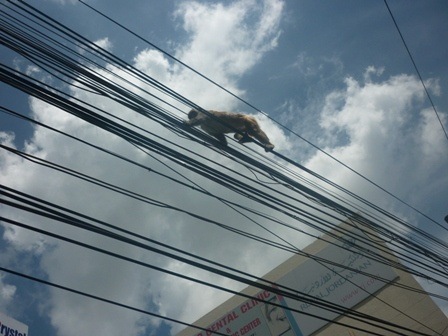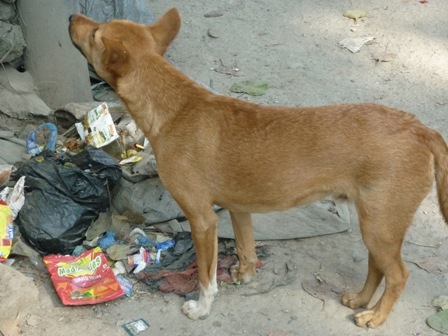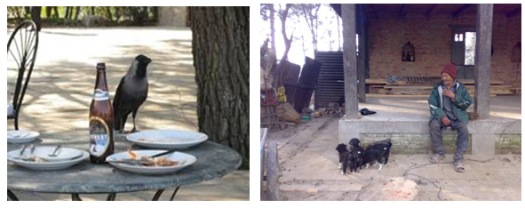Creating a Story from Everyday Life as an Effective Tool in Language Learning
Motikala Subba Dewan, Nepal
Motikala Subba Dewan is an Associate Professor of English at Ratna Rajya Laxmi Campus, Tribhuvan University (TU), Nepal, has more than 18 years experience of teaching Intermediate to Master level students. Her job description: Teaching creative writing course including research methodology, language for use, presentation skill, fiction and drama; supervising and guiding MA students for writing assignment and thesis; checking exam papers and setting questions, designing syllabus, etc. She is an executive member of Nepal English Language Teachers' Association (NELTA) and a life member of Literary Association of Nepal (LAN), Kathmandu, also a member of IATEFL and a member of Asian Group of Creative Writing. As well as an advocate, practices in the Supreme Court, member of Nepal Bar Council and executive member of Environmental Unit in Nepal Bar Association, the Supreme Court and vice-chairperson of TU Teachers' Association (TUTA), RR Campus Unit, 2011. She is a freelance professional rapporteur, language trainer, interpreter and translator. She has published few books, written several articles in different national and international journals in both disciplines and presented papers in different national and international conferences and workshops.
E-mail: motikala_d1@hotmail.com
Menu
What is a story?
Types of stories
My view
Activities
A story has all the characteristics of a novel: characters, setting, plot, etc but it is shorter than a novel. Its length is measured in terms of number of pages or words and sentences but sheer length is not the justification of a short story. A story is not simply a string of events one can tell on and on, it is a bit like cooking, selecting ingredients skillfully (Alan Maley).
- Fantasy: Fantasy stories are nothing but the combination of old traditional and the supernatural details with imagination, sometimes based on myths.
- Humor: These types of stories are meant for producing surprise, laughter and delight.
- Satire: The main purpose of satire is to attack the evils of society.
- History: History types deal with a life story or historical event.
- Local Colour: These types of stories deal with the customs and traditions of rural and small-town life. (Folk tales and stories told by grandparents and mothers to daughters, etc come under this genre)
- Others: Email messages, dialogues etc.
Most of the stories are based on facts partly or fully, which can be dramatized using our imagination.
Level: Higher Secondary
Time: 1 Hour
Objectives:
- To motivate students to create a story on the basis of their own expereinces
- To improve language skills( Listening , speaking, reading and writing)
- To increase vocabulary
A. Activities for Listening and Speaking (30 minutes)
- Ask students if they write a diary about day to day events. (5 m.)
- Ask students if they ever tried to create a story from any paticular event. If any, ask a few of them to share their storoies with the class. (10 m.)
- Introduce what a story is and how to start writing a story. (5 m.)
- Tell them some stories written on the basis of everyday experiences. (10 m.)
B. Activites for Reading and Writing ( 30 minutes)
- Distribute the handout of a story for the students to read (5 m.)
- Ask them to write a summary of the story in one sentence (5 m.)
- Show some pictures and ask students to create a story based on one of the pictures in 50 words. (8 m.)
- Ask a few of them to read their stories aloud. (10 m.)
- Sum up the class providing feedback (2 m.)
C. Activities for Listening and Speaking (30 minutes)
Some ways to start writing a short story?
- Start with a place or natural object ( e.g. market, city, rock, a tree, etc...)
- Start with a smell, a flavor, a sound, a sensation...
- Start with the weather
- Start with time of day
- Start with an evocative object (eg, an old wallet, a bank note, a letter, etc…)
- Start with a character with significant detail (e.g. wet mouth, a nasal voice etc…)
- Start with a line of dialogue( perhaps something you have heard)
- Start with an incident ( it was the day when we lost )
- Start with an historical incident or disaster…
- Start with a strong childhood memory...
- Start with an item of local news from the newspaper….
There are many ways to start writing story. Above mentioned are practical considerations.
D. Telling stories
1. A Monkey on Wires,Motikala Subba Dewan

Every time when I drive my car from Thapathali, I see a monkey walking on the bundle of wires overhead, without caring for the incessant traffic below. Every time my car stops at a red light, I see it scratching its head yet retaining its balance on one hand and leg and crossing safely to the other side of the road. There is a temple where perhaps it gets food. One afternoon, I was driving from the same place; I saw that monkey trying to climb on to the lamppost from the window of a nearby house. In a second, it was on the wire walking as usual, slowly and carefully. Suddenly something happened, it lost its balance. It tried to find something to grab but there was nothing to hold onto, so it fell down with a loud thud and a car’s brakes screeched. Then I heard the monkey cry out ion pain. It was hit, and I saw its little body lying in a pool of blood.
2. A moment in time with: “My Friend”, Motikala Subba Dewan

Every day when I go to college, I have to cross an area with some garbage containers kept by Kathmandu municipality. It is impossible to reach college without savouring the unpleasant aroma of the surroundings. I usually notice homeless dogs of different sizes and colours are hovering around the garbage containers. Among them one dog has come to my attention, for unlike his companions who run away he always stays. I called him ‘Rate’. I have got into the habit of watching Rate and his friends. I feel good seeing him running, jumping and sometimes following female dogs passively, wagging his tail. Sometimes I see him fighting for food with other dogs, baring his sharp teeth and growling. Sometimes, chasing street kids out of his territory too. Rate is the king of his area, happy and carefree. He has become my friend. Often, I bringhim biscuits, Rate shows his gratitude by wagging his tail. Sometimes I don't have anything to give him, and then he turns away slowly and shows his unhappiness by barking at the garbage collectors. I can hear those people trying to shoo him away by throwing stones. Rate whimpers, making sounds that go “kuiee.. kuiee….”when he is hit, and these people laugh. Rate then, comes slowly over to me with pleading eyes as if saying, 'I can fight with my own kind but I cannot fight yours' I express my consent silently.
When I return after my winter vacation, I see Rate playing with three brown puppies while their proud mother sits nearby and watches over them. Rate’ has becomes a dad! Next day I bring many packets of biscuits for them. Time passes by……………Then.I go to visit my mother. When I returned, Rate is nowhere to be seen. I anxiously ask the garbage collectors 'Have you seen a street dog, the big one that used to bark at you?' They answer, 'Oh tyo bhusyaha kukur? Hamro gardi le ek hafta agadi kichhyo ra maryo' ( Oh that mongrel dog? It was crushed by our lorry and killed obout a week ago and we dumped him in the garbage)I feel a lump in my throat, and my vision blurs. ‘My Friend’ is no more.
E. Activites for Reading and Writing ( 30 minutes)
Show some pictures and ask students to create a story in 50 words choosing one picture. (8 minutes)


Please check the Creative Methodology for the Classroom course at Pilgrims website.


|